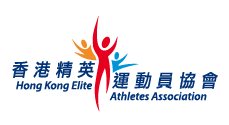
【體路專欄】心理健康 (Mental health) 又稱為精神健康。根據世界衛生組織 (簡稱世衛)的定義,心理健康是一種良好的精神狀態,讓我們應付日常生活壓力、肯定自我、進行高效工作,並對社會作出貢獻。心理健康對個人、社區和社會經濟發展極為重要。
世衛早於2001年發表《心理健康:新理解,新希望》報告書1,檢視影響心理健康的因素與負擔,並提出相關服務和規劃的建議,促進預防及治療。其後,世衛會員國於2013年通過《2013-2030年心理健康綜合行動計劃》2,承諾以改善心理健康為全球具體目標,加強領導和管理,提供社區護理服務,實施促進和預防策略,強化信息系統和研究。於2019年,世衛啟動《2019-2023年心理健康特別倡議:心理健康全民健康覆蓋》3,呼籲12個重點國家為超過 1 億國民提供優質且實惠的心理健康服務。今年6月,世衛發表一份廿年來具最大規模的全球心理健康報告書4,重申我們需要從態度、行動、方法等作出轉變,為有需要的人士加強心理健康服務,重塑影響心理健康的環境,尤其因2019冠狀病毒病所導致焦慮和抑鬱的數字增加了25%。由此可見,心理健康是一個十分重要的議題。
雖然心理健康已納入全球發展目標之一,但最近數字顯示5,全球大約14%的青少年(即1億6千6百萬 ),正在面對心理健康問題,例如焦慮和抑鬱等等。近半數的精神病患者於14歲前開始發病,對他們成年後的生活造成負面的影響4。香港數據顯示,在2019-2020年度6,醫管局兒童及青少年精神科專科門診的求診人次為40,300,十年內增幅達162%。超過七成求診者為有特殊教育需要 (SEN) 學童,專注力不足或過度活躍症(ADHD)及自閉症譜系障礙 (ASD)分別佔43%及35%。不少研究顯示SEN學童在情緒行為、認知功能 (Cognitive function)、社交和動作技能發展等方面均受到限制,甚至患有執行功能障礙,而執行功能 (Executive function) 正是促進學童認知功能發展所需的基本認知技能。
近年來,透過運動或體力活動以促進SEN學童的心理健康,包括認知功能,引起學者極度關注。澳洲紐卡素大學David Lubans 教授提出三種潛在影響機制(即神經生物、心理社會和行為的假設)的理論框架,解釋體力活動如何促進發育正常的兒童及青少年的心理健康發展7(圖一)。以神經生物的假設為例,體力活動刺激海馬迴神經細胞的發展與成長,增加腦源性神經營養因子BDNF(Brain-Derived Neurotrophic Factor),有利控制神經新生。又以心理社會的假設為例,體力活動可以提升學童身體自我感知、社會聯繫、心情和情緒等。這些潛在影響機制進而改善心理健康的結果,包括促進認知功能,提升自尊和生活質素,以及減輕焦慮和抑鬱等。

圖片來源:Lubans et al. (2016). Pediatrics,138, e20161642.
研究顯示,運動或體力活動有效正面促進學童的認知功能。但對於執行功能,尤其是ADHD和ASD學童,效果仍有待驗證。執行功能是高階認知功能8,與大腦前額葉的發展有關, 涉及調整行為、實踐計劃,以及控制情緒的能力。執行功能主要有三項核心成分,包括抑制控制 (Inhibitory control)、認知靈活性 (Cognitive flexibility) 及工作記憶 (Working memory),與心理健康有密切的關係。最近,我們的研究團隊進行系統回顧和薈萃分析,探討運動干預對ADHD9和ASD10學童執行功能的影響。以下為結果發現:
- 長期性運動干預改善ADHD和ASD學童的整體執行功能,尤其對抑制控制及認知靈活性的核心執行功能有正面的影響。
- 在橫截面研究11發現,ADHD學童參與中等至劇烈強度的體力活動 (Moderate-to-vigorous physical activity, MVPA) 愈多,心理彈性 (Resilience,即處理危機和困難的心理調節能力) 便愈高,而壓力和抑鬱會愈低。
- 為期十二週結合有氧活動與認知需求的試點干預,發現該干預對 ADHD 學童的三類核心執行功能產生即時正面的影響12。
運動好處多,健心又健腦。教育局於2021-22學年啟動「躍動校園 活力人生」計劃(“Active Students, Active People”Campaign,簡稱「ASAP」計劃),協助學童達到世衛MVPA60的建議,建立活躍及健康的生活方式,培養正面和積極的態度。近年來,聯合國視運動為社會變革的力量和可持續發展目標 (Sustainable Development Goals) 的推動者13。每年10月10日是世界心理健康日 (World Mental Health Day),讓我們透過運動或體力活動,促進SEN學童的心理健康,提高社會各界對心理健康議題及特殊群體的關注與支持。
參考文獻
- World Health Organization. (2001). The World health report 2001. Mental health : New understanding, new hope. World Health Organization. https://apps.who.int/iris/handle/10665/42390
- World Health Organization. (2021). Comprehensive mental health action plan 2013–2030. World Health Organization. https://apps.who.int/iris/handle/10665/345301
- World Health Organization. (2019). The WHO special initiative for mental health (2019-2023): Universal health coverage for mental health. World Health Organization. https://apps.who.int/iris/handle/10665/310981
- World Health Organization. (2022). World mental health report: Transforming mental health for all. World Health Organization. https://apps.who.int/iris/handle/10665/356119
- United Nations Children’s Fund. (2021). The state of the world’s children 2021. On my mind: Promoting, protecting and caring for children’s mental health. UNICEF.
https://www.unicef.org/reports/state-worlds-children-2021
- The Legislative Council. (2021). Mental health services for young people. Legislative Council of the Hong Kong Special Administrative Region of the People’s Republic of China.
7.Lubans, D., Richards, J., Hillman, C., et al. (2016). Physical activity for cognitive and mental health in youth: A systematic review of mechanisms. Pediatrics,138, e20161642.
- Donnelly, J. E., Hillman, C. H., Castelli, D., Etnier, J. L., Lee, S., Tomporowski, P., Lambourne, K., & Szabo-Reed, A. N. (2016). Physical activity, fitness, cognitive function, and academic achievement in children: A systematic review. Medicine and Science in Sports and Exercise, 48, 1197–1222.
- Liang, X., Li, R., Wong, S. H. S., Sum, R. K. W., & Sit, C. H. P. (2021). The impact of exercise interventions concerning executive functions of children and adolescents with attention-deficit/hyperactive disorder: A systematic review and meta-analysis. International Journal of Behavioral Nutrition and Physical Activity, 18, 68.
- Liang, X., Li, R., Wong, S. H. S., Sum, R. K. W., Wang, P., Yang, B., & Sit, C. H. P. (2022). The effects of exercise interventions on executive functions in children and adolescents with autism spectrum disorder: A systematic review and meta-analysis. Sports Medicine, 52, 75–88.
- Liang, X., Qiu, H., & Sit, C. H. P. The mediating role of resilience in the association between MVPA and psychological ill-being in children with ADHD. Scandinavian Journal of Medicine & Science in Sports, revision under review.
- Liang, X., Qiu, H., Wang, P., & Sit, C. H. P. (2022). The impacts of a combined exercise on executive function in children with ADHD: A randomized controlled trial. Scandinavian Journal of Medicine & Science in Sports, 32, 1297–1312.
- United Nations. (2015). Sport and the sustainable development goals: An overview outlining the contribution of sport to the SDGs. https://www.un.org/sport/sites/www.un.org.sport/files/ckfiles/files/Sport_for_SDGs_finalversion9.pdf
【香港運動醫學及科學學會專欄】
 文:薛慧萍教授
文:薛慧萍教授
香港運動醫學及科學學會 運動科學及研究委員會 委員 (2020-22年)
香港中文大學體育運動科學系教授及系主任
國際適應體育學會候任會長
此篇文章由「體路 Sportsroad」最初發表於「【香港運動醫學及科學學會】運動改善有特殊教育需要(SEN)學童的心理健康」
